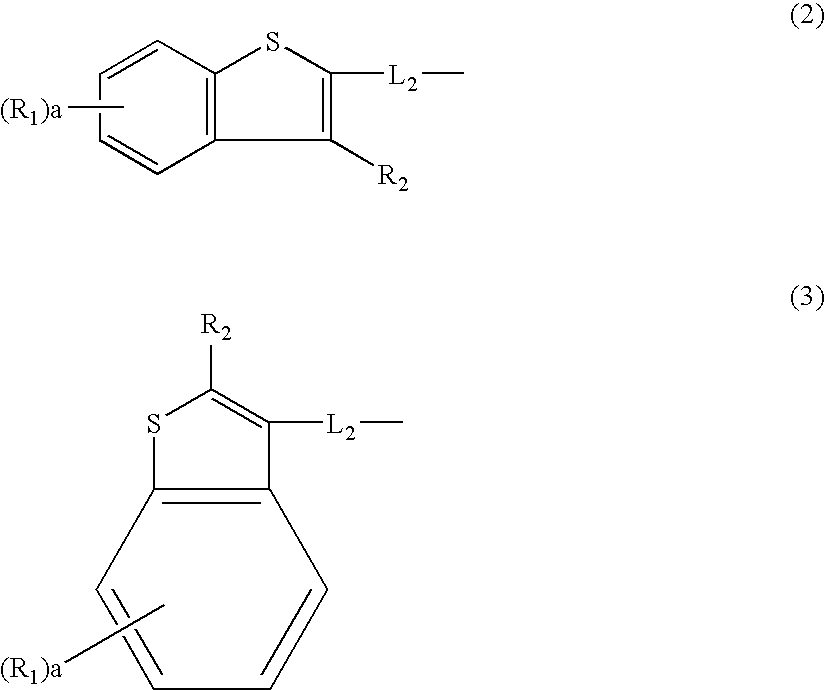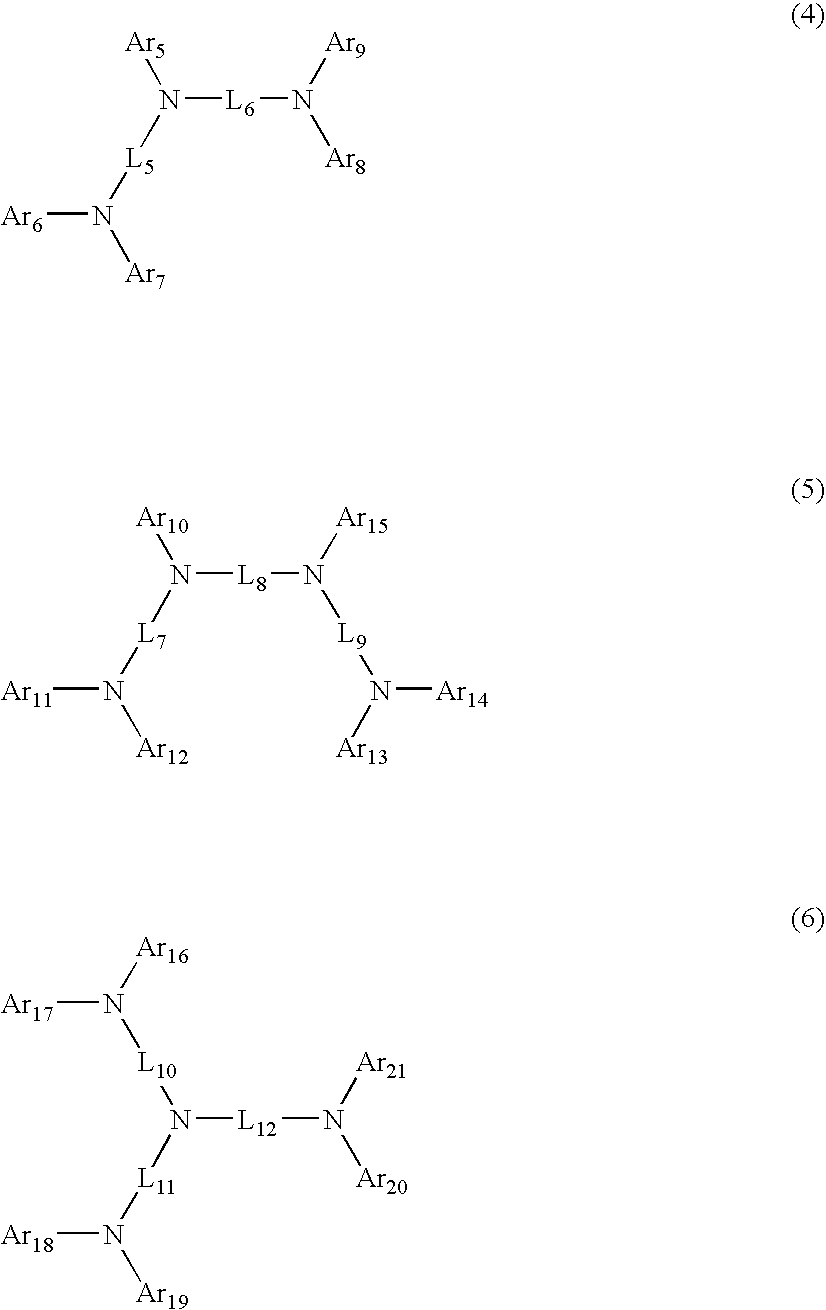Aromatic amine derivatives and organic electroluminescent device using same
a technology of organic electroluminescence and amine derivatives, which is applied in the direction of discharge tube/lamp details, luminescent screen of discharge tube, organic chemistry, etc., can solve the problems of reducing a current efficiency, affecting and affecting the operation voltage, so as to improve the yield of organic el devices and prolong the life. , the effect of less liabl
- Summary
- Abstract
- Description
- Claims
- Application Information
AI Technical Summary
Benefits of technology
Problems solved by technology
Method used
Image
Examples
synthetic example 1
Synthesis of Intermediate 1
[0177] A three neck flask of 1000 ml was charged with 47 g of 4-bromobiphenyl, 23 g of iodine, 9.4 g of periodic acid dihydrate, 42 ml of water, 360 mL of acetic acid and 11 mL of sulfuric acid under argon flow, and the mixture was stirred at 65° C. for 30 minutes and then reacted at 90° C. for 6 hours. The reaction product was poured into ice and water and filtered. The filtered matter was washed with water and then with methanol, whereby 67 g of a white powder was obtained. The principal peak of m / z=358 and 360 versus C12H15BrI=359 was obtained by analysis of FD-MS, and therefore it was identified as Intermediate 1.
synthetic example 2
Synthesis of Intermediate 2
[0178] A three neck flask of 300 ml was charged with 10 g of p-terphenyl, 12 g of iodine, 4.9 g of periodic acid dihydrate, 20 mL of water, 170 mL of acetic acid and 22 mL of sulfuric acid under argon flow, and the mixture was stirred at 65° C. for 30 minutes and then reacted at 90° C. for 6 hours. The reaction product was poured into ice and water and filtered. The filtered matter was washed with water and then with methanol, whereby 18 g of a white powder was obtained. The principal peak of m / z=482 versus C18H12I2=482 was obtained by analysis of FD-MS, and therefore it was identified as Intermediate 2.
synthetic example 3
Synthesis of Intermediate 3
[0179] A reaction vessel of 20 L was charged with 441 g of thianaphthene-2-boronic acid, 600 g of 4-iodobromobenzene, 41 g of tetrakis(triphenylphosphine)palladium (Pd(PPh3)4), 2.6 L of 2M solution of sodium carbonate (Na2CO3) and 10 L of dimethoxyethane under argon flow, and then they were reacted at 80° C. for 8 hours. The reaction solution was extracted with toluene / water, and the extract was dried on anhydrous sodium sulfate. This was concentrated under reduced pressure, and a crude product obtained was refined through a column, whereby 241 g of a white powder was obtained. It was identified as Intermediate 3 by analysis of FD-MS.
PUM
 Login to View More
Login to View More Abstract
Description
Claims
Application Information
 Login to View More
Login to View More - R&D
- Intellectual Property
- Life Sciences
- Materials
- Tech Scout
- Unparalleled Data Quality
- Higher Quality Content
- 60% Fewer Hallucinations
Browse by: Latest US Patents, China's latest patents, Technical Efficacy Thesaurus, Application Domain, Technology Topic, Popular Technical Reports.
© 2025 PatSnap. All rights reserved.Legal|Privacy policy|Modern Slavery Act Transparency Statement|Sitemap|About US| Contact US: help@patsnap.com



